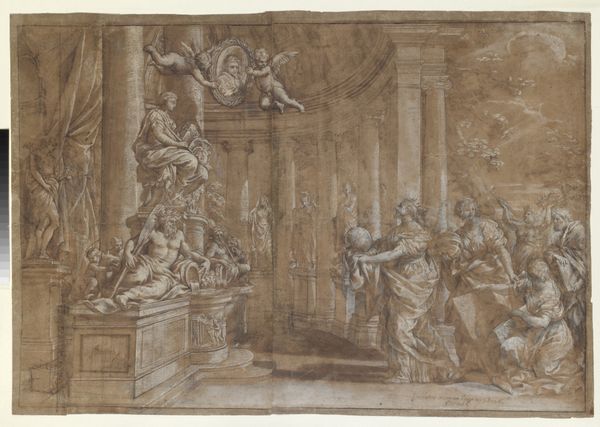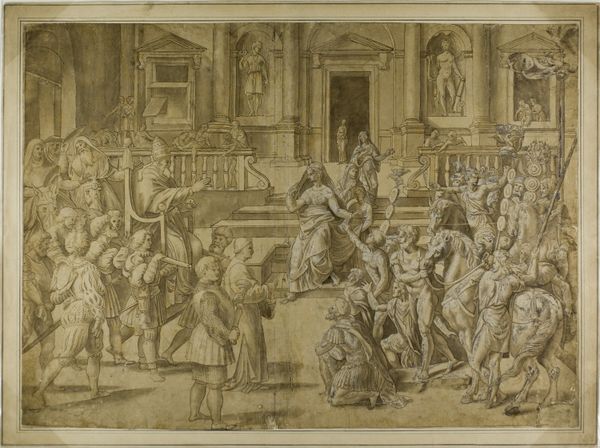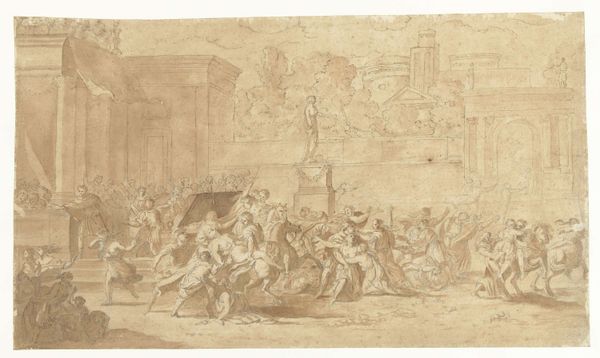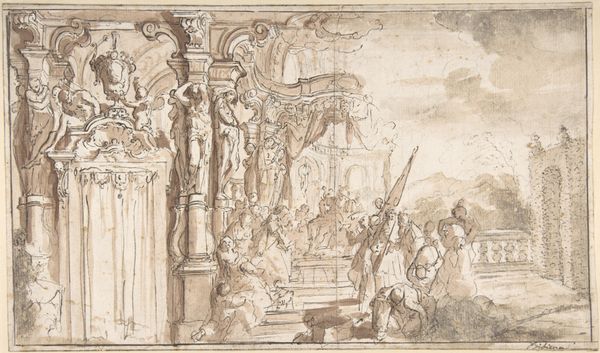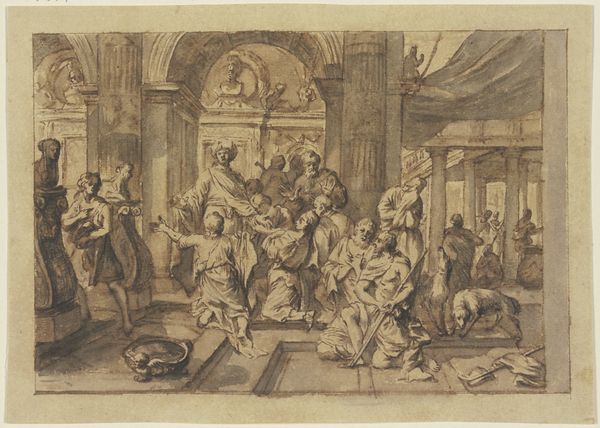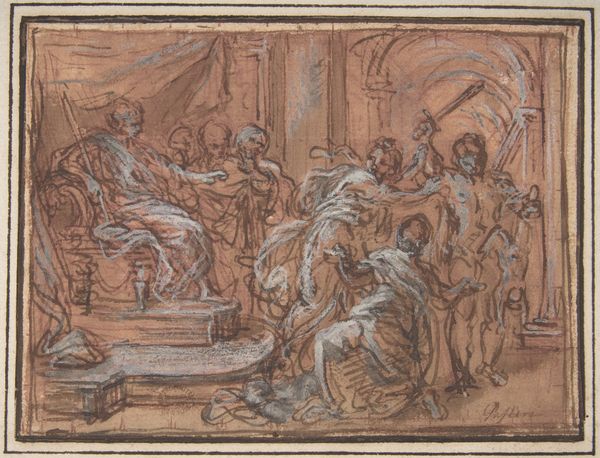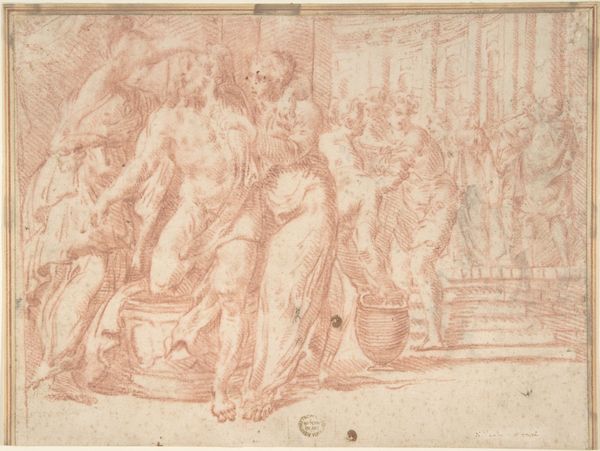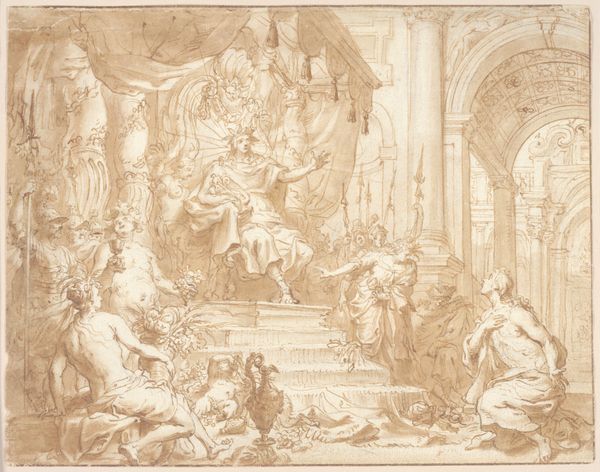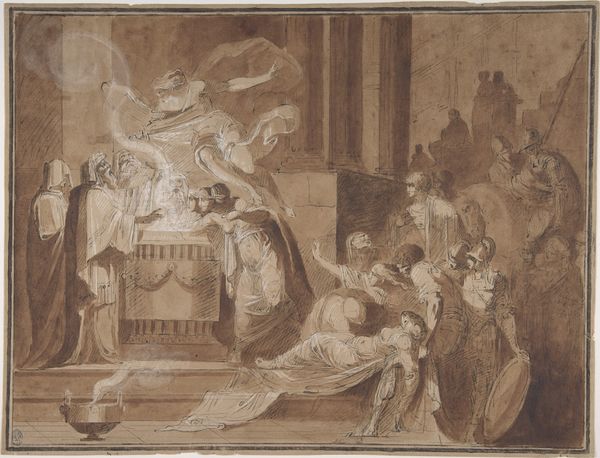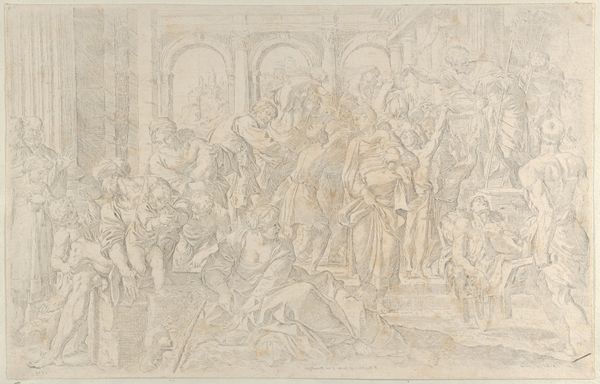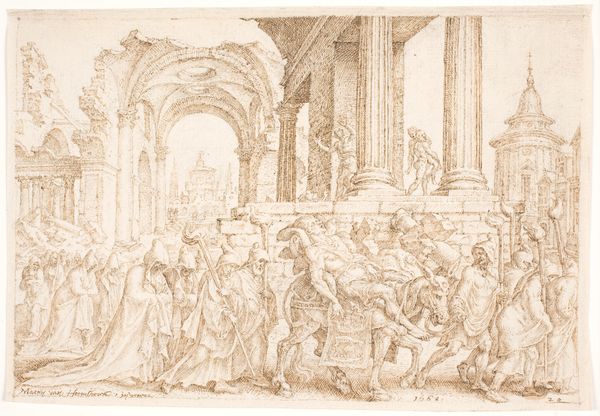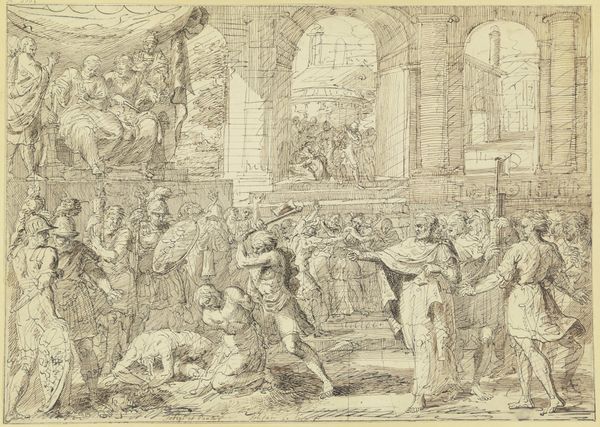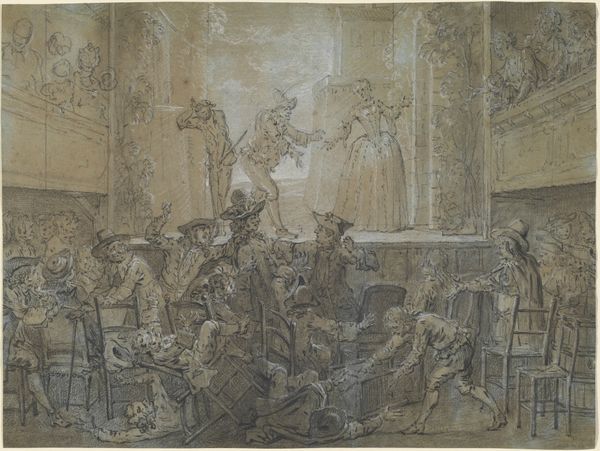
drawing, print, paper, ink
#
drawing
#
allegory
# print
#
mannerism
#
figuration
#
paper
#
11_renaissance
#
ink
#
history-painting
Dimensions: sheet: 8 11/16 x 13 3/4 in. (22 x 35 cm)
Copyright: Public Domain
Federico Zuccaro made this drawing, called "Study for The Allegory of Spring," with pen and brown ink, and brown wash, over black chalk in Italy during the late 16th century. It’s a preliminary sketch for a larger painting, revealing Zuccaro's thinking behind the commission. Allegories, like this one, were common in Renaissance art, serving as visual tools to communicate complex ideas through symbolic figures. Here, the central figure likely represents Spring, surrounded by a flurry of activity and figures that embody the season's themes of rebirth and renewal. During this time, art was closely tied to powerful institutions like the Church and aristocratic families. Artists like Zuccaro relied on their patronage, and their works often reflected the values and interests of their patrons. The "Allegory of Spring" celebrates nature's bounty and harmony, concepts that resonated with the wealthy elite, who often associated themselves with the natural world and its cycles. To truly understand this drawing, we can delve into the historical context, examining Zuccaro’s biography, patronage networks, and the cultural significance of allegorical art in the late Renaissance.
Comments
No comments
Be the first to comment and join the conversation on the ultimate creative platform.
